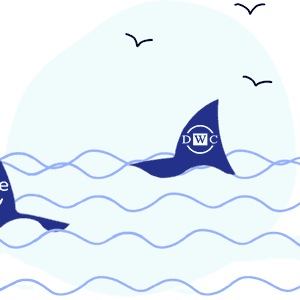Carlyle: How Private Equity Feeds on CA Workers' Comp

California workers’ comp has a problem: investment in administrative entities by private equity firms.
When private equity owns significant stakes in businesses specializing in workers’ comp administrative services, too often the effect is red tape, inefficiency, and ineffective services—all of which can equal frictional profit. The longer injured workers remain injured and claims remain open, the more need there is for administrative services like:
- Claims administration
- Bill review
- Network discounting
Private equity firms like the Carlyle Group invest in all of the above (and more).
This means that friction profit is generated repeatedly from the same injured workers, whose extended claim durations mean more administrative services and more money flowing into the businesses that thrive on administrative expenses.
As we pointed out most recently, California takes twice as long (7 years) to close injured workers’ claims and spends double the national median on administrative expenses, blowing 49 cents for every dollar of benefits delivered.
Employers and legislators are frequently told that provider fraud is the primary source of waste in workers’ comp. However, private equity effectively turns injured workers into annuities that churn friction profit for years.
All Roads Lead to Private Equity
To understand the relationships between different comp-related businesses that can work in concert to funnel profits to private equity, take Carlyle’s ownership of a majority stake in Sedgwick.
Sedgwick is a Third-Party administrator (TPA), which means that on behalf of insurers and self-insured employers, Sedgwick has the power to influence or directly determine:
- Which providers an injured worker may visit through the Medical Provider Network (MPN) system
- Which treatments the injured worker may (or may) not receive, through Utilization Review (UR)
- How much the provider is paid, through bill review and the application of discounts based on Preferred Provider Organization (PPO) and other network discounts
Sedgwick controls all aspects of an injured worker’s care, including the doctors eligible to treat, the care doctors are allowed to provide, and the reimbursement amounts paid for that care.
Enter network entity MedRisk. MedRisk has been swallowing up pieces of the workers’ comp administrative space for years, including:
- Purchasing Sedgwick’s physical therapy network in 2022
- Purchasing the “Casualty Claims Solutions Business” of network entity Conduent in 2024
- Acquired Medata, which provides bill review services, in 2024
And here’s the twist: Carlyle also owns a majority stake in MedRisk. This means Carlyle controls MedRisk, Medata, and everything MedRisk purchased from Conduent—in addition to controlling Sedgwick.
In the end, Carlyle reigns over the TPA controlling the claim, the networks dictating which providers are eligible to treat, and the bill review services applying discounts and otherwise shrinking providers’ reimbursements. No matter where the money flows through these nebulous webs of networks and administrative entities, much of it ultimately flows to Carlyle.
Worst of all, the actions of these Carlyle companies suggest a chilling conclusion has been reached: Carlyle & friends do not increase profits by making it easier for injured workers to get the care they need.
As we’ve written about endlessly, companies under the Carlyle umbrella, including Sedgwick, MedRisk, Medata, and Conduent, are some of the worst offenders among companies that make it more difficult for injured workers to get appropriate treatment and for providers to receive appropriate reimbursement.
The dense webs of interconnected companies—all peddling discounts and bill review services and otherwise innovating new ways to create profit by slashing provider revenue—can be hard to keep track of. But one thing remains consistent no matter which thread you pull: all roads lead to private equity.
For decades, legislators and employers have been told that aggressively tackling provider fraud is the best way to fix workers’ comp and save employer dollars. Meanwhile, in plain sight, billions are spent on wasteful, inefficient, burdensome administrative hurdles—to say nothing of the costs of unmitigated payer non-compliance—49 cents and seven years at a time.
When will California get serious about who’s really draining the system?
Nationwide, daisyBill increases revenue and decreases hassle for providers who treat injured workers. Get a free demonstration below.
SCHEDULE DEMO
DaisyBill provides content as an insightful service to its readers and clients. It does not offer legal advice and cannot guarantee the accuracy or suitability of its content for a particular purpose.






